Enrico Castellani, co-founder of gallery and art review Azimut/h, Zero group member, and precursor of minimalism, has died at the age of 87. His career was dedicated to exploring the spatial and visual qualities of his distinctive undulating monochrome Superficie (surfaces).
Castellani was born in 1930 in Castelmassa, on the banks of the river Po, between Mantua and Ferrara. He moved to Brussels in 1952, following an educational path befitting his artistic concerns: he studied painting and sculpture at the Académie Royale des Beaux-Arts at the same time as architecture at the École Nationale Supérieure des Arts Visuels de La Cambre, graduating from the latter in 1956. After moving to Milan, in 1958 Castellani joined the movimento d’arte nucleare (art for the nuclear age) alongside Piero Manzoni, Agostino Bonalumi and Lucio Fontana, to whom he would sell his first work the following year.
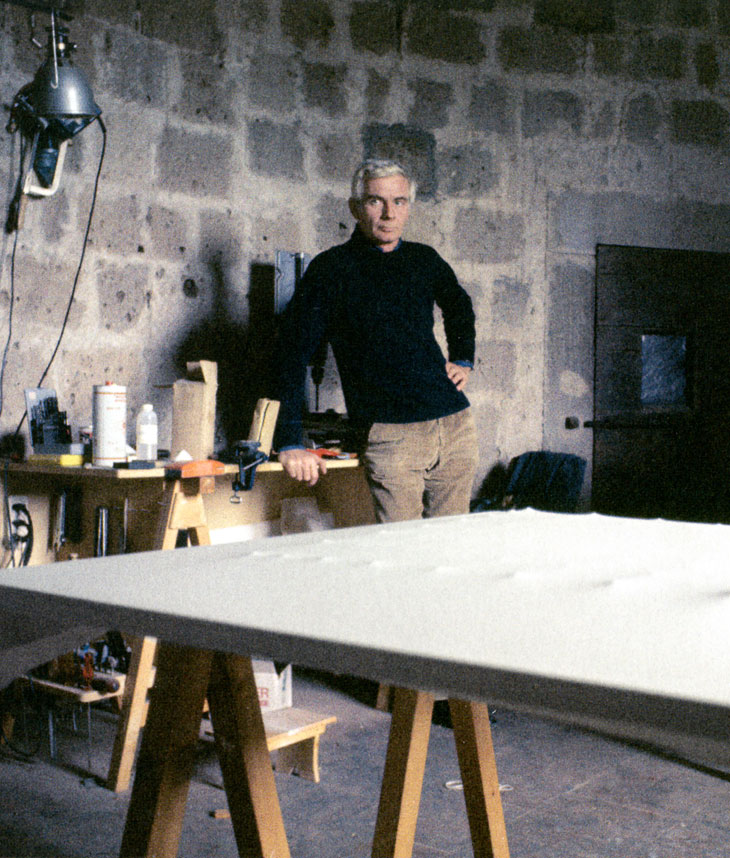
Enrico Castellani in his studio, Celleno, c. 1977-78. Photography by Franco Pasti. Courtesy Fondazione Enrico Castellani and Lévy Gorvy
This singular education and milieu generated Castellani’s trademark technique. In 1959, following experiments with folds, Castellani placed hazelnuts behind a canvas painted black, modifying its surface and creating abstract forms through light alone. While not the first to refashion the flatness of a canvas – Alberto Burri’s gobbi (hunchbacks), for example, had been well-known since 1954 – Castellani, who soon switched from nuts to nails, had found the visual vocabulary which would come to define his career.
Within the confines of his chosen technique – manipulating the play of light, usually with nails, on a monochrome (from 1964, exclusively white) canvas to create convex ‘extroflexions’ and concave ‘introflexions’ – Castellani continued to experiment. From the perspectival play of the 1960s, to the single lines in space of the 1970s, and rhythmic compositions of the 1980s, Castellani’s beguiling topographies overtly challenged the categories of painting and sculpture. Donald Judd in his manifesto Specific Objects (1965) would come to name Castellani, alongside Yves Klein, as a father of minimalism.
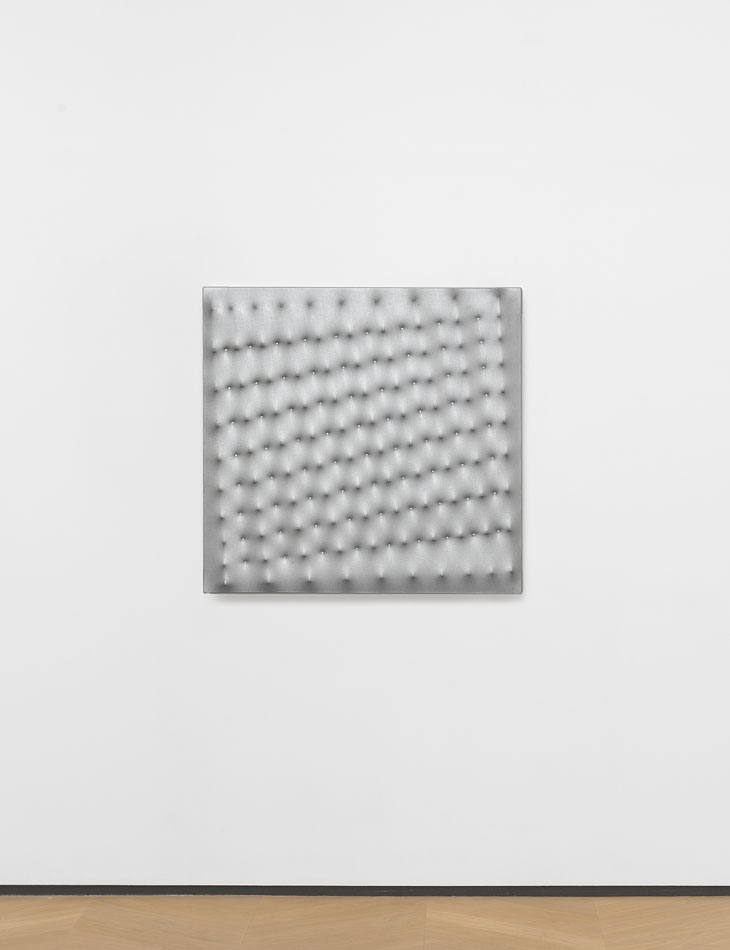
Installation view of ‘Enrico Castellani’ (Lévy Gorvy London, 2016). Image courtesy Lévy Gorvy
A crucial part of Castellani’s quest to go beyond painting, and challenge the international prevalence of Abstract Expressionism and Tachisme, was the gallery Azimut and art review, named Azimuth, which he co-founded with Manzoni in 1959. The Milanese gallery would launch the careers of both of its founders. The publication connected its Italian founders to fellow travellers around the world – Klein, Jean Tinguely, Jasper Johns and Robert Rauschenberg – and thrust them onto the international scene.
It was with the Zero group, based in Düsseldorf but equally international in its outlook, that Castellani found his greatest affinity. Like Zero’s founders Heinz Mack and Otto Piene, Castellani explored immateriality, light, and movement; with Günther Uecker he shared the use of nails. Castellani was prominently featured in Zero group shows in Amsterdam and Philadelphia in the 1960s. He was also included in the landmark exhibition ‘The Responsive Eye’ at the Museum of Modern Art, New York, in 1965. Likewise lauded in his home country, Castellani represented Italy in the 1966 Venice Biennale, where he was awarded the Gollin prize.
More recently, Castellani received a retrospective at the Fondazione Prada in Milan in 2001 which toured to Kettle’s Yard, Cambridge, and won the prestigious Japanese Praemium Imperiale award for painting in 2010. The artist’s central role in the post-war international avant-garde, and its accompanying ever-increasing status in the market, seems set to ensure an enduring international prominence for his unique visual language.
Unlimited access from just $16 every 3 months
Subscribe to get unlimited and exclusive access to the top art stories, interviews and exhibition reviews.

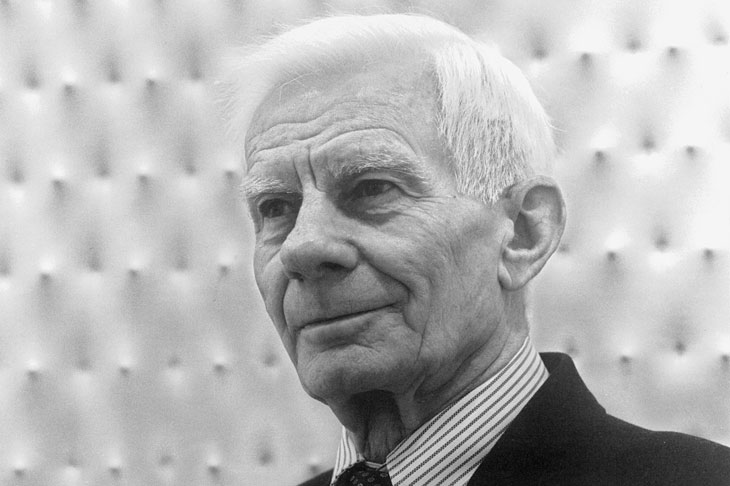
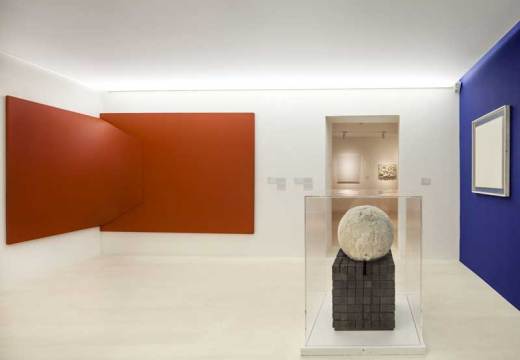
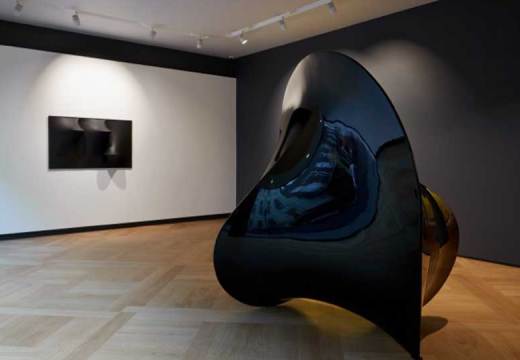
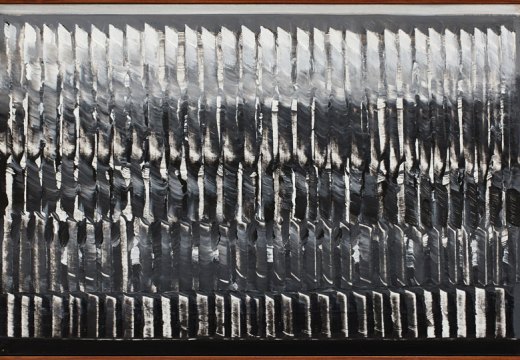









![Masterpiece [Re]discovery 2022. Photo: Ben Fisher Photography, courtesy of Masterpiece London](http://www.apollo-magazine.com/wp-content/uploads/2022/07/MPL2022_4263.jpg)
It’s time for the government of London to return to its rightful home